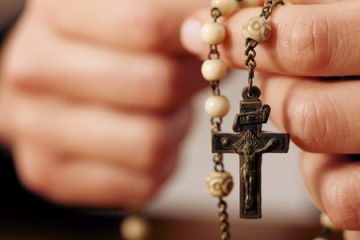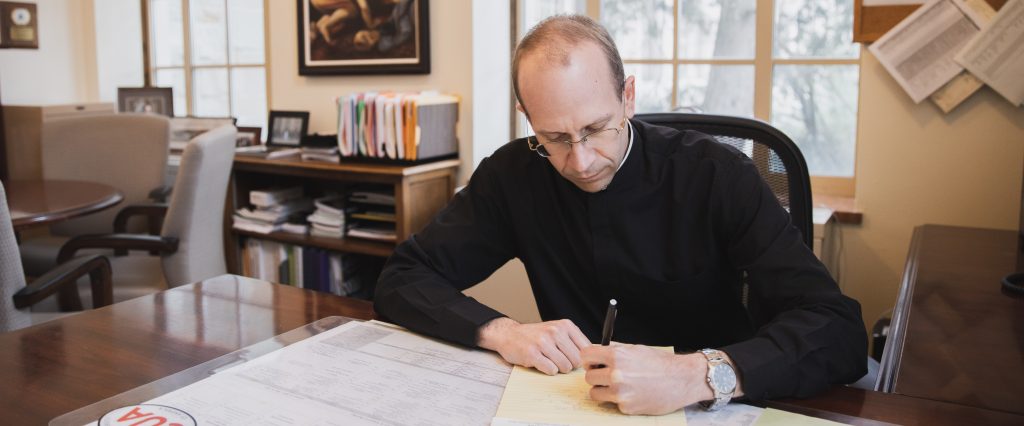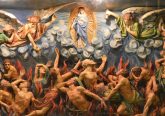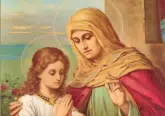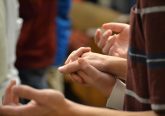Cincinnati’s First Parish: Christ Church
The following is an excerpt from A Bicentennial History of the Archdiocese of Cincinnati: The Catholic Church in Southwest Ohio, 1821-2021 by Fr. David J. Endres.
A group of four German Catholic families arrived in Cincinnati in 1817 as part of a coordinated migration. Perhaps only by coincidence, by the time they arrived efforts at organizing the Catholics in the city were gaining strength. Only weeks before the families’ arrival in Cincinnati, the Cincinnati Western Spy and Dayton Ohio Watchman advertised a meeting of area Catholics, to be held on October 12, 1817, to make plans to build a Catholic church, which would be named Christ Church. The note encouraged Catholics “to please take notice that great encouragement is already held out to them.” Nine men, seven women and four children attended the October 1817 meeting at the Michael Scott home. Soon a campaign to raise funds for the building of a church commenced.
OBTAINING LAND
In the spring of 1819, the Christ Church congregation, representing an estimated 100 Catholics, was officially incorporated in the state of Ohio as a religious society with five lay trustees. With meager funds, the pioneer Catholics purchased a lot north of the city limits, in the “northern liberties” (named because it was outside the reach of “the law”) near what would later become the northwest corner of Liberty and Vine Streets. Though it has been claimed that the church was built outside the city limits because of an anti-Catholic ordinance forbidding a church in town, it seems more likely that a city location was not proscribed but that the land in the northern liberties was acquired more easily and on better terms. This, however, placed the property in proximity to saloons, gambling houses, brothels and other undesirable neighbors.
BUILDING THE CHURCH
Once the land was secured, Michael Scott drew up the plans for a simple frame church of 55 by 30 feet. The building was soon assembled, and on Easter Sunday, April 19, 1819, Christ Church held its first religious service. Father Nicholas Dominic Young, OP – the nephew of the missionary and future bishop Edward Fenwick – celebrated Mass that day and continued, along with Fenwick, to serve Catholics in Cincinnati. The church was quite modest, made of bare wood, without plaster or ceiling. Perhaps because the building was unsecured, the congregation members brought “pictures, crucifixes and candles every time they went to the chapel.”
One chronicler, unimpressed with the structure and its location, stated that this first Catholic church – if one could call the barn-like, plank hut a church” – was inconveniently located in the woods one mile distant from the city, such that in bad weather “the bottomless muddy path” from the city to the church was “almost impassable.”
While the attempt to form a congregation had finally been successful, the lack of Catholics in Cincinnati was pronounced. Bishop Benedict Joseph Flaget of Bardstown, Kentucky (who then had jurisdiction over the Catholics in Cincinnati), wrote in June 1819, just as Christ Church was beginning, that it was a “great misfortune” that so few Catholics had settled in the city. He lamented that only a smattering of Catholic “laborers and clerks” and a mass of potential converts composed the populace.
THE FIRST CATHEDRAL
Notwithstanding its modest Catholic beginnings, on June 19, 1821, Cincinnati was established as the center of a new diocese, with Fenwick its first bishop. He, along with several other Dominican priests who arrived in March 1822, began to serve the Catholics of the new diocese. With the establishment of Cincinnati as a diocese, the humble Christ Church was elevated to the position of a cathedral and was the site for Ohio’s first priestly ordination when on April 6, 1822, Bishop Fenwick called to priesthood Father Francis Vincent Badin, the younger brother of missionary Father Stephen Theodore Badin (the first priest ordained in the U.S.).
A BIG MOVE
The city’s Catholics – regardless of ethnicity – worshipped together at the new cathedral only until the middle of 1822. Though they had used the property for only three years, it became evident to Fenwick that the northern liberties location was not suitable. Against the advice of the church’s lay trustees, he decided to relocate the church south to Sycamore Street, closer to the Bottoms neighborhood, where most of the Irish lived. The structure was moved using oxen, but it fell apart en route and had to be rebuilt in its new location. The first Sunday afterward, the building began to sway visibly during Mass. Michael Scott and another parish member sprang from their pews to secure the building, with Scott climbing underneath and risking harm to steady the supports.
Pioneer Catholics continued to worship in the former Christ Church building (then renamed St. Peter in Chains) after its move. However, the structure’s size was inadequate. In 1825, Michael Scott drew up plans for a new brick cathedral on the Sycamore Street site. While Christ Church was noted for its simplicity, the new cathedral church was a Gothic-inspired church at a size of 110 by 50 feet with five 15-foot windows on each side. Once the new building was ready for worship, on June 29, 1826, the original Christ Church was no longer used for religious services (but would house St. Francis Xavier Seminary when it opened in 1829). The location of the cathedral would change again in 1845, when it was moved to its current location at Eighth and Plum Streets. Sycamore street would become the site for a parish church for English-speakers staffed by the Jesuits and called St. Francis Xavier Church.
This article appeared in the June 2021 Bicentennial Edition of The Catholic Telegraph Magazine. For your complimentary subscription, click here.





